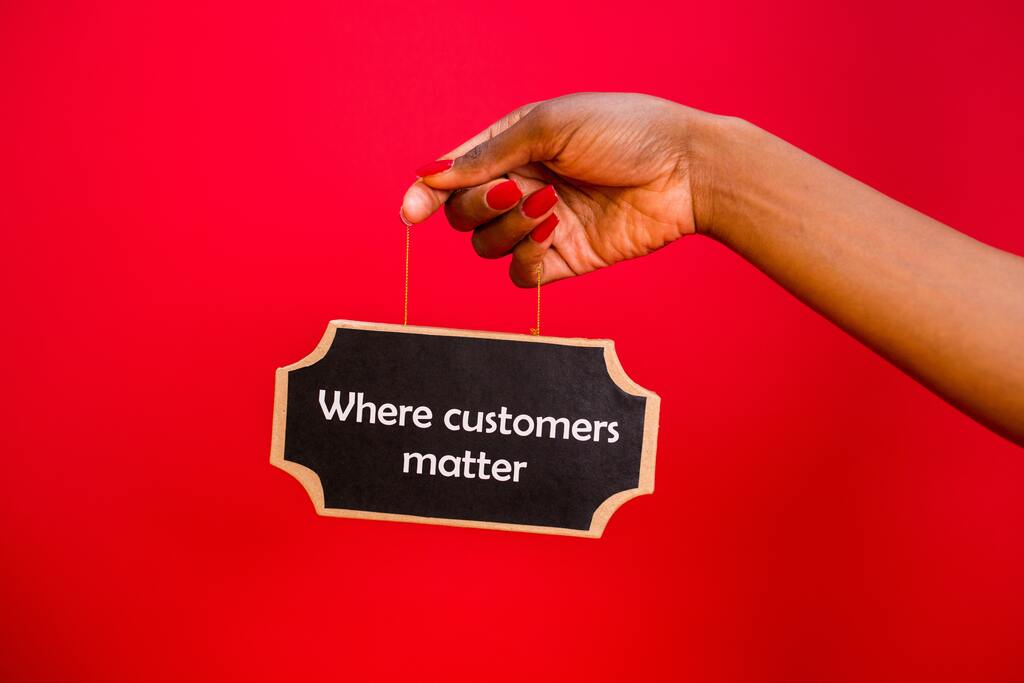You can’t improve your customer service without tracking the right customer service KPIs or Key Performance Indicators. Customer service KPIs are vital to understanding how your customer service efforts are doing, where you’re lacking, and how to improve.
Tracking too few KPIs will give you an incomplete view of your customer service. But tracking too many KPIs will quickly overwhelm you and make you lose sight of what matters.
That’s why we’ve created this list of over 100 customer service KPIs and metrics, so you can get a good idea of what exists and choose the most important customer service KPIs.
Let’s get started.
List of 50+ KPIs & Metrics for Customer Service
Here are all the key performance indicators you can use to measure customer support:
Abandoned call rates
How many calls are cropped or abandoned by the caller before reaching a live agent.
How to calculate abandoned call rates
Calculated by dividing the abandoned calls by the total number of inbound calls.
Active Issues
The number of issues your company is experiencing that affect your customers in real-time.
How to calculate Active Issues
Your agents should have access to the issues currently affecting your customers, recollected by the appropriate team and condensed and counted by the customer care manager.
Agent’s Tone and Language
The general attitude that a customer service agent has toward the customers and users interacting with them.
How to calculate Agent’s Tone and Language
This can be measured by breaking down customer service tone and language skills into actions and counting how many of those actions the agent performs during the customer interaction.
Agents’ Problem-Solving Skills
The skill of the agent to solve the user’s query or problem quickly, effectively, and if possible, permanently.
How to calculate Agents’ Problem-Solving Skills
Although harder to calculate than other customer support KPIs, you can track this by measuring the time it takes the agent from the moment the query or problem is identified to the moment it’s resolved. You can also deduct points if the agent pursued futile efforts.
Analysis of channel performance
How well your current customer service efforts are working, measuring how profitable they are, and how effective they are.
How to calculate analysis of channel performance
A more general key performance indicator, this analysis will likely depend on the channel’s efforts and its own KPIs, adding them together to get a final score.
Average age of a problem, per business impact
How long it takes from when a problem appears until the problem gets resolved.
How to calculate Analysis of channel performance
If you cannot automatically measure when the problem appeared, make sure your reps ask about it and define when the problem got resolved, either during the customer service contact or at a later date.
Average Complaints per Day
The number of calls, chats, emails, or other approaches from users to criticize the company, the employees, the service/product, or any other aspect of the company.
How to calculate Average Complaints per Day
Have your customer service reps create separate tickets and label them properly to file the number of complaints, then average them by week or month.
Average Handle Time
The average length of time the rep spends with users from the moment the rep answers the call until the moment the user hangs up.
How to calculate Average Handle Time
The average handle time may be calculated per team or per service rep, and it can be averaged by day, week, month, or lifetime.
Average Hold Time
The length of time the average user spends on hold during a call.
How to calculate Average Hold Time
Make sure to measure whether or not the rep places the user on hold during a call, how often this happens, and for how long the user is on hold.
Average Resolution Time (ART)
How long it takes your reps to solve their open tickets on average. This is calculated by agent or team. Choosing to do this by team will likely show you how long it takes your company to resolve tickets, whereas breaking it down by agent will let you know who the best performers are and will shine a light on agents that may need more help or training.
How to calculate Average Resolution Time (ART)
Measure how long the agents take to solve each ticket and average these times based on how long they take to resolve them.
Average Speed of Answer (ASA)
The length of time a user spends waiting for someone to answer their attempt of communication.
How to calculate Average Speed of Answer (ASA)
Your messaging app or phone system will usually be able to calculate how long it takes for each interaction to start and will average this according to your needs. If it can’t, you can think about setting up a VoIP number and system for your business. Those tools offer great reporting features. The average response time is usually around 30 seconds.
Average Time Between Customer Interactions
How long the agent takes from finishing a customer interaction to starting the next one.
How to calculate Average Time Between Customer Interactions
Your messaging app or phone system should be able to calculate the time between interactions, which can help you balance the workload for your agents, especially during busier times.
Average time to diagnose
How long it takes the agent to move from starting an interaction with a user to determining the purpose of the interaction.
How to calculate Average time to diagnose
This is a customer service KPI you’ll likely need to calculate by observing random customer interactions, averaging the time taken by the agent to realize why a user is contacting the company.
Agent Utilization Rates
How many of the agents are occupied with user interactions at any given time.
How to calculate Agent Utilization Rates
Your messaging app or phone system should be able to calculate the average agent utilization rate automatically to give you a better idea of the workload of the agents.
Calls Answered Over Time
How many customer interactions reps are handling during a specific period of time.
How to calculate Calls Answered Over Time
Your messaging or phone software will usually track the number of customer interactions handled by your team, breaking it down by agent.
Calls per Product
How many calls your team is receiving about each of your individual products.
How to calculate Calls per Product
You can set up your ticketing software to reflect the product the ticketing is about and feed that information into your analytics software to compute it.
Cancellation Rate
How many of your customers are contacting your agents to cancel their services or return their products.
How to calculate Cancellation Rate
Set up your ticketing software to not only reflect how many cancellations are happening but why they’re happening, allowing your agent to select common reasons to further break down this KPI.
Consistent Resolutions
How consistent individual agents are at resolving tickets when different users contact them with the same problem.
How to calculate Consistent Resolutions
Although you may want to start by listening to calls or reading live chat logs, you can use AI to automatically evaluate each query and ensure the resolutions stay consistent.
Cost per Call
How much it costs the company to sustain the team on a call-by-call basis.
How to calculate Cost per Call
Calculate how much agents are paid and how much it costs to run the facilities they’re in. Divide that by the number of calls your team handled during that time.
Cost per Incident
How much it costs the company to handle each incident on average, regardless of whether it’s resolved or not.
How to calculate Cost per Incident
Calculate how much the agents are paid and how much it costs to run the facilities they’re in. Divide that by the number of incidents your team handled during that time.
Cost Per Resolution
Calculate how much the agents are paid and how much it costs to run the facilities they’re in. Divide that by the number of tickets your team closed during that time.
How to calculate Cost Per Resolution
(*) Note: please use either “calculate” or “measure”, depending on the KPI
Cross-Selling Opportunities
How many chances the agents have to make a sale during a customer integration, regardless of whether the agent takes it or not.
How to calculate Cross-Selling Opportunities
Although you may want to start by listening to calls or reading live chat logs, you can use AI to automatically review each query and count how many chances the agent had to make a sale relevant to the query they were handling.
Customer Churn Rate
How many customers have stopped doing business with your company.
How to calculate Customer Churn Rate
Calculate how many cancellations you’ve had that have transitioned a customer into a non-paying user.
Customer Complaints During Call
How many times a customer makes a complaint during a single call.
How to calculate Customer Complaints During Call
Use AI in the form of speech analytics software to analyze how many complaints your agents get during one call, and break down the reasons behind them.
Customer Effort Score (CES)
How easy or hard it is for your customer to interact with your team and resolve their queries, measured on a numeric scale.
How to calculate Customer Effort Score (CES)
It’s usually measured through a one-question form after the customer has stopped communication with the agent, rating the difficulty of resolving their query from 1 to 10.
Customer Engagement Levels
How many customers are interacting with your brand and for how long.
How to calculate Customer Engagement Levels
Calculate how many of your customers are in each of the five or six levels of engagement set by your company.
Customer Handover Rates
How many times an agent is unable to resolve a problem and hands the customer interaction to a different agent.
How to calculate Customer Handover Rates
Although this is usually directly reflected in transfer rates, make sure the handover rates only reflect the times where the agent was not able to resolve a query and not when the call was transferred for any other reason.
Customer Retention Rate (CRR)
How many customers remain loyal to the company in a specific period of time.
How to calculate Customer Retention Rate (CRR)
Calculate how many customers have not fully canceled their interactions with the company per month, trimester, quarter, year, or longer to define your customer retention rate.
Customer Satisfaction By End of Call
How satisfied and happy the customer is after the call has ended.
How to calculate Customer Satisfaction By End of Call
Ask your customers to fill out a quick survey after their call to rate their satisfaction.
Customer Satisfaction Score (CSAT)
How satisfied customers are in general with the attention of the customer service team. This usually measures how happy they are with the resolution of their queries, how well the client feels they were treated, and how easy or hard it was to resolve their queries.
How to calculate Customer Satisfaction Score (CSAT)
The way the CSAT will be calculated will likely differ from company to company, ranging from small surveys after a call to longer follow-up surveys a few days after the interaction.
Daily Customer Returns
How many product returns are processed per day in total.
How to calculate Daily Customer Returns
This customer service KPI should easily be calculated within your ticketing system where each return is flagged.
Demo-to-registration conversion rate
How many users have used the product or service in the form of a free trial and end up converting to paying customers after the trial period has expired.
How to calculate Demo-to-registration conversion rate
Count how many users have continued to use your solution after the free trial has expired, and calculate this number against the number of users that haven’t converted.
Employee Satisfaction Score (ESAT)
A mathematical expression of how satisfied your reps are with their jobs, which can tell you potential areas of opportunity and help you decrease turnover rates.
How to calculate Employee Satisfaction Score (ESAT)
This KPI will likely depend on a few customer service metrics. You can get employees to fill out a quick survey at the end of the month in which they can rate their job satisfaction on a scale of 1 to 10.
Employee Turnover Rate (ETR)
How many of your employees stop working for you during a specific amount of time.
How to calculate Employee Turnover Rate (ETR)
HR will usually have a record of the number of employees that have stopped working at your company, broken down by the reasons they left.
Enrollment Conversion Rate
How often a user becomes a paying customer during or after an interaction with one of your agents.
How to calculate Enrollment Conversion Rate
To calculate this conversion rate, you’ll have to track user behavior throughout an interaction and after it has ended to determine how many users each agent has been able to convert into paying customers.
Escalation Rate
How many users ask to talk to the agent’s manager or supervisor to resolve a query or file a complaint.
How to calculate Escalation Rate
Escalations should be considered in ticketing software, making sure to record each time your agents transfer a call to a superior and why they did so.
First Contact Resolution (FCR)
How often agents can permanently resolve an issue within a single interaction.
How to calculate First Contact Resolution (FCR)
You can use your ticketing software and CRM to track how often a customer has to call to resolve an issue, and how often a problem is permanently fixed after one interaction.
First Response Time (FRT)
How long it takes between a customer raising a ticket and an agent responding to it, regardless of whether the ticket gets resolved or not.
How to calculate First Response Time (FRT)
This is usually measured in business hours unless the customer reaches a 24/7 service line.
Immediate Responses Versus Queued Calls
How often users are getting through to an agent immediately compared to the number of calls the agents are receiving at the moment.
How to calculate Immediate Responses Versus Queued Calls
Calculate the percentage of users reaching an agent without having to wait in line. This percentage should be as high as possible for better customer satisfaction.
Incidents per Account
How many incidents each user has had with their product or service.
How to calculate Incidents per Account
Your CRM should help you log the number of incidents each customer has and how many users are yet to contact your team about an incident.
Incidents related to problems in relation to all incidents in a particular time period
How many incidents were reported when a known issue was affecting your company.
How to calculate incidents related to problems in relation to all incidents in a particular time period
Narrow your search to the timeframe your company experienced an issue, and count how many users noticed it and contacted your team about it.
Invalid Claims
How many tickets are created only to be discarded due to the lack of a reason for them to exist.
How to calculate Invalid Claims
File the tickets created by invalid claims separately in your ticketing system, allowing your agents to specify that they’re closing them due to a mistake and not because there’s an actual issue to resolve.
Knowledge Sharing Function
How often your users share a piece of content created by your company.
How to calculate Knowledge Sharing Function
Keep track of all your “share” buttons through analytics to figure out how often each piece of content is shared, and identify the kinds of content more likely to be shared by your users.
Minutes Spent on Call
The average time it takes for agents to resolve users’ queries.
How to calculate Minutes Spent on Call
Your phone system will likely be able to keep track of the length of each call and average them this per agent or for the whole team.
Monthly Recurring Revenue (MRR)
How much revenue your company can expect to make consistently.
How to calculate Monthly Recurring Revenue (MRR)
Calculate it by multiplying the total number of paying users by their average revenue.
Net Promoter Score (NPS)
How many clients are recommending your company to other people.
How to calculate Net Promoter Score (NPS)
NPS is usually calculated through a survey that allows you to break down your responders into detractors, passives, and promoters. Once you’ve identified them, simply subtract the percentage of detractors from the percentage of promoters to get your NPS score.
New problems
The number of problems your users report for the first time.
How to calculate New problems
Your ticketing system should show why each ticket was created. You can break down the reasons to identify new ones.
New Ticket
How many tickets are created in a period of time.
How to calculate New Ticket
Any ticketing system should keep you informed of how many tickets are created during any given period.
Pages per visit
How many of your website pages are opened by a single user between landing on your website and leaving it.
How to calculate Pages per visit
Google Analytics and other analytics platforms (such as this Google Data Studio alternative) automatically keep track of this customer service KPI for you.
Problems registered
How many tickets were created due to an issue a customer had with your company.
How to calculate Problems registered
Your ticketing system should reflect which tickets were created due to a user experiencing issues and not due to them wanting to resolve a simple query.
Problems solved
How many issues are raised by customers in any given period.
How to calculate Problems solved
Your ticketing system should be set up to accurately reflect which tickets are exclusively about issues related to customer experience and how many of them get solved.
Product adoption
The percentage of new paying customers in a specific period of time.
How to calculate Product adoption
You can calculate your product adoption rate by dividing the number of new users by the total number of users to get the right percentage.
Product Return Rate
How to calculate Product Return Rate
(*) Note: please use either “calculate” or “measure”, depending on the KPI
Product stickiness
The propensity or likelihood of customers to return to using your product or service or to use it more often.
How to calculate Product stickiness
Count the active users in any given time, dividing that number by the number of users logged during the previous 30 days to get a percentage of product stickiness.
Product/Service Knowledge
How familiar your agents are with the products or services your company offers and how your customers interact with them.
How to calculate Product/Service Knowledge
Test your agents regularly and average their scores to get a full view of your team’s knowledge.
Qualitative customer feedback
Detailed customer service performance indicators as to why your customer left positive or negative feedback.
How to calculate Qualitative customer feedback
Ask your customers to fill out a survey rating multiple areas of your customer service to get detailed qualitative customer feedback to learn how well your team is doing in various areas.
Quality of Written Communication
How well your customer service team is doing when communicating through email or live chats.
How to calculate Quality of Written Communication
You can review chat logs or use an AI to measure the quality of written communication automatically.
Rate of Resolution
The rate at which your customer service team and individual agents fulfill service requests.
How to calculate Rate of Resolution
Take the number of solved tickets and divide them by the tickets received during any given time. Then multiply this number by 100 to get a percentage rate of resolution.
Repeat Purchase Rate
The rate of customers that have made more than one purchase during any given period.
How to calculate Repeat Purchase Rate
Count the number of customers that have made more than one purchase and divide this by all purchases made on a given date range to get a percentage.
Replies per resolution
The number of replies it takes for an issue to get resolved.
How to calculate Replies per resolution
take the total number of replies on resolved support tickets and divide them by the number of resolved conversations with one or more replies within the specified date range.
Response to Training
How your agents are impacted by coaching and training, and whether they implement new learnings into their customer interactions.
How to calculate Response to Training
There are multiple ways of measuring your agent’s response. One of them is keeping track of the KPIs you want to affect with training to see whether or not they improve after training, averaging them to get one solid number.
Returned Product Transportation Cost
How much it costs to process the return of a product measured by an average per product or by a total number.
How to calculate Returned Product Transportation Cost
Calculate the logistics of handling returns in both material cost and work hours, then divide this by the number of products that were returned during that period.
Revenue Growth
How much your income has increased compared to the last period.
How to calculate Revenue Growth
Subtract the last period’s revenue from your current period’s revenue. Divide that number by the previous period’s revenue to get a percentage.
Rewards Breakage Rate
The percent of reward points your customers don’t end up redeeming.
How to calculate Rewards Breakage Rate
Divide the number of points that did not get spent by the total number of points issued during a period.
Self-service rate
The percentage of users solving their queries by their own means, without contacting customer support.
How to calculate Self-service rate
Compare the number of sessions in your knowledge base against the number of support ticket issues within the same period.
SERVQUAL
The measurement of quality of customer service given by your team over your users’ expectations.
How to calculate SERVQUAL
You’ll have to measure five different elements: Reliability (customer service consistency), Assurance (how agents build trust and confidence throughout their interaction), Tangibles (how the company appears to the customer), Empathy (how the agents engage with the customer’s needs), and Responsiveness (how willing the agent is to solve users’ queries).
Success Rate of Calls (CSSR)
The percentage of customer interactions that end up resolving the customer’s query or queries.
How to calculate Success Rate of Calls
Divide the successful interactions by the total interactions. The ideal value should be 1.
Ticket backlog
The number of support tickets that end up not being resolved or addressed within a certain timeframe and get carried onto the next period.
How to calculate Ticket backlog
Take the total number of tickets generated during a certain period and subtract the number of tickets that did get resolved during that time.
Ticket Volume by Support Channel
The number of support tickets generated through each channel of communication during a specific period.
How to calculate Ticket Volume by Support Channel
Your ticketing system should track your ticket volume divided by each channel your customers have to contact you.
Time Between Purchases
How long the customer goes on average between making purchases.
How to calculate Time Between Purchases
Divide the optimal order size by the actual demand during that period.
Time on site
How long each user spends browsing your website.
How to calculate Time on site
You can easily find the average time on site in your Google Analytics or any other embedded analytics tool.
Top 10 Customers by Active Tickets
The 10 customers your team needs to prioritize at any given time.
How to calculate Top 10 Customers by Active Tickets
Calculate this based on customer loyalty, paid prioritized customer support, or any other customer support metrics that help you prioritize which client needs attention the fastest.
Top Performing Agents
The agents that have excelled at their jobs the most, achieving all the goals you’ve set for them.
How to calculate Top Performing Agents
Determining your top-performing agents will likely depend on what you value in a customer support representative, like the number of tickets resolved or how fast your agents resolve tickets on average.
Top Topics
The topics that are the most valued by your users.
How to calculate Top Topics
Your top topics will usually be the ones that get visited the most, which you’ll be able to see in Google Analytics or any other website analytics tool.
Training Hours per Year
How many hours you spend on training.
How to calculate Training Hours per Year
Count the hours your agents spend on training and divide them into the kind of training they’re getting to further contextualize them.
Warranty Claims as a Percentage of COGS
How much of your cost of sold goods is spent on warranty claims.
How to calculate Warranty Claims as a Percentage of COGS
Divide your warranty claims by your COGS (cost of goods sold) to get a percentage.
How to Set KPIs for Customer Service
With so many customer service KPIs available, you’ll have to choose which ones you’ll keep track of for your customer support. Here’s how to do it.
1. Set goals
It’s a good practice to set up SMART goals. These goals should be reasonable and should aim to fix or improve your customer service in a tangible way.
Instead of trying to revolutionize your whole customer service approach, stick to goals that are realistic, and make sure your support agents get enough input not only to see how realistic they are but to get their commitment to achieving them.
2. Define how you’ll measure those goals
All goals must have a definition of success. If, for example, you’d like to improve your customer service by diminishing the time of the call, you must review everything that goes into that to make it come to reality.
Instead of defining that you’d like to lower your call duration, you may decide to aim for a decrease of time customers spend on hold and an increase of customer agent problem-solving skills to help your reps understand and solve the query as fast as possible.
3. Include other KPIs that are relevant to your goals
Measuring and improving KPIs for customer service is usually a matter of balance. If you aim to improve a specific KPI, you may end up affecting a different customer service KPI in your efforts.
For example, by trying to decrease the time of calls, you may end up decreasing your First Contact Resolution because your support agents are too focused on finishing the call quickly instead of resolving the customer’s query because that may take longer than patching the issue.
4. Communicate your customer service KPIs to your customer service team
Once you’ve decided which KPIs to focus on for customer service, your customer support team must not only learn which ones they are but also how those should inform how they perform their work.
5. Track your KPIs through reliable data
The better the quality of your data, the better you’ll be able to measure your results. To make sure you’re properly keeping track of your KPIs, use solid customer service tools to measure them, like analytics, reports, and AI. If you need to track data from multiple sources, consider using a dashboard that merges those different data streams.
6. Re-evaluate your KPIs periodically
You should make sure you keep making data-driven decisions to decide which KPIs you’ll keep track of by measuring customer service agents’ and users’ satisfaction levels.
Conclusion
KPIs are the most basic and valuable data to keep in mind. If you can choose the right ones, you’ll be able to fully understand not only how well your customer service is doing, but how you can help your agents improve their work and be happier and more loyal to your company.







 Instagram
Instagram